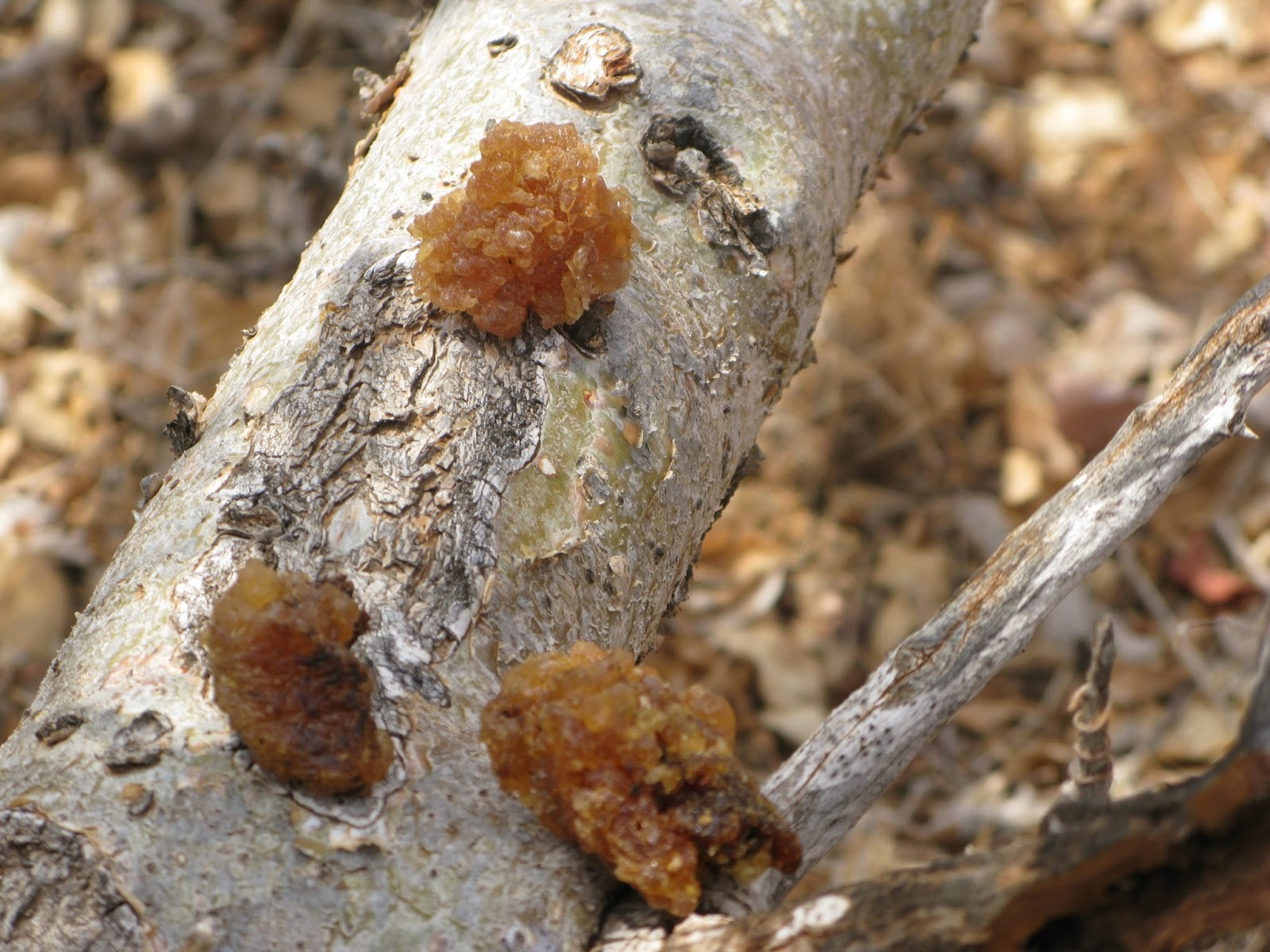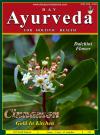GUGGUL “Protects Against Disease”
Guggul is made from gum resin of Commiphora mukul tree native to Rajasthan & Gujarat. Infact the word Guggul is the sanskrit word which means one that protects against diseases. It is used in Ayurvedic medicines from centuries and is described in all the classical Ayurvedic texts including Sushruta Samhita where it is especially recommended for the treatment of rheumatic pains and obesity. It is one of the most important herbal tonics of Ayurveda and is described in Charak Samhita in Samgyasathapan mahakshaya for restoration of consciousness. It is indicated for fumigation and also used as ointment. In Vedas, it is also indicated to be used in hawan yagya for making peaceful environment and to drive away evil spirits.
When used for medicinal purposes, the resin is harvested from the stems in winters. To obtain resin, circular incisions should be made on main stem. Through these incisions, aromatic fluid exudes that quickly solidifies to form golden brown or reddish brown agglomerate. This is being termed as Guggul. It is purified by placing the gum into bag of thick coarse cloth and then boiling it in decoction of Triphala until it is soft. Then it is spread out on wooden board where it is smeared with cow ghee and allowed to air dry. The dried gum is fried again in cow ghee and finally powdered for medicinal use.
Pure Guggul
Soft, sticky with sweet smell, bitter taste and soluble in water.
Types of Guggul
In Ayurvedic texts five types of guggul are mentioned.
• Mahishaksha - Black in colour, for human use.
• Mahaneela- Blue in colour.
• Kumud- White in colour.
• Padma- Brown, for animal use.
• Kana- Greenish yellow.
Mahishaksha guggul is the best and used in ayurvedic preparations.
Chemistry
Guggul contains gum resin and volatile oils. The extract isolates ketonic steroid compounds known as guggulsterones. These compounds have been shown to provide the cholesterol and triglyceride lowering actions. Guggul has also been shown to reduce the stickiness of platelets thus lowering the risk of coronary artery disease. It serves as an astringent and antiseptic on mucus membranes. It stimulates body metabolism.
Dosage
500 mg twice daily
Guggul has very subtle and penetrating qualities which mean it is often employed specifically to carry other substances deep into the tissues.
Precautions
It should be avoided during pregnancy, while breast feeding, in case of excessive uterine bleeding and hyperthyroidism. It is always best to be checked by ayurvedic doctor before starting the herbal medicine.
Benefits of guggul
• Neuroprotective.
• Purifies the blood.
• Boosts immune system.
• Helps maintain normal weight.
• Natural source of antioxidants.
• Supports regular menstruation.
• Improves digestion and appetite.
• Supports normal cholesterol and lipid level.
• Supports normal function of joints and connective tissue.
Systematic use of guggul
1. Respiratory Acts as an expectorant. Fumes of burning guggul can be inhaled for hayfever, nasal congestion and bronchitis.
2. Cardiovascular Antiatherogenic and cardiac tonic.
3. Digestive Useful in dyspepsia, hemorrhoids.
4. Urinary Helps in removing urinary stone and useful in burning micturition.
5. Reproductive Useful in impotency & menstrual disorders. It acts as an emmenagogue.
6. Matabolic Old guggul is indicated in obesity and diabetes. New guggul is beneficial in debility and emaciation.
7. Neurological Prescribed in sciatica, facial paralysis, hemiplegia, rheumatoid arthritis.







 Dec 2024
Dec 2024
 May 2024
May 2024
 September 2022
September 2022
 April 2022
April 2022
 October 2020
October 2020
 Jan 2020
Jan 2020
 June 2019
June 2019
 January-February 2019
January-February 2019
 Augest-September
Augest-September
 April 2018
April 2018
 November 2017
November 2017
 June 2017
June 2017
 November 2016
November 2016
 September 2015
September 2015
 March 2015
March 2015
 July 2014
July 2014
 January 2014
January 2014
 July2013
July2013
 March 2013
March 2013
 May 2012
May 2012
 May 2011
May 2011
 Sep 2010
Sep 2010
 Jun 2010
Jun 2010
 Feb 2010
Feb 2010
 December 2009
December 2009
 August 2009
August 2009
 June 2009
June 2009
 Feb 2009
Feb 2009
 December 2008
December 2008
 October 2008
October 2008
 March 2008
March 2008
 July 2008
July 2008
 May 2008
May 2008